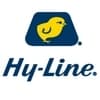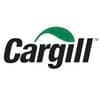Efectos del estrés térmico sobre la calidad de la carne en los pollos de engorde
La gran evolución genética de la tasa de crecimiento en los pollos de engorde genera ejemplares más susceptibles a los problemas de estrés calórico en zonas con altas temperaturas ambientales.
En el mundo, la carne de pollo es una de las fuentes de proteína más importantes, con un crecimiento sostenido en los últimos años. Desouzart (2012) indica que el consumo mundial de carne de pollo pasó de 11,8 kg/persona en 2007 a 12,86 en 2013. La creciente producción de pollos podría ser aún más importante si algunos de los problemas para la producción pudieran mejorarse. Entre los problemas más importantes está la gran evolución genética de la tasa de crecimiento en los pollos de engorde, que se acompaña con una mejor conversión de alimento pero que genera pollos más susceptibles (Havenstein et al., 1994 y Havenstein et al., 2003 a,b). Esta situación favorece los problemas de estrés calórico en zonas donde prevalecen las altas temperaturas ambientales.
Este problema del estrés calórico parece ser además un problema mundial. Houghton et al. (2001) afirman que el promedio de temperatura ambiente (TA) en la superficie de la Tierra ha aumentado en 0,6 °C durante el siglo XX. En África del Norte o en Francia pueden surgir problemas por calor como en el verano de 2003, cuando los golpes de calor provocaron un aumento de la mortalidad con costes económicos importantes (44,5 millones de euros en Francia reportados por Amand et al., 2004). También se dan problemas estacionales de temperatura en América, lo cual provoca altos índices de mortalidad, hasta de un 14 %, contrastando con el 5 % de mortalidad en épocas normales (IICA, 2003). Muchos autores han indicado que la exposición de las aves a TA elevadas favorece la deposición de grasa (Aïn Baziz et al. 1996; Howlider y Rose, 1987; Valancony, 1997). Igualmente han sido reportados daños en los pollos cuando son transportados en condiciones inadecuadas a la sala de sacrificio. Además, es de esperar que el calor pueda producir alteraciones en algunos órganos, que afectarían la salud del pollo de engorde.
EFECTO DE LOS TRATAMIENTOS TÉRMICOS SOBRE LA INTEGRIDAD EN ALGUNOS ÓRGANOS
Pueden distinguirse dos tipos de estrés calórico en aves: el estrés calórico crónico, que se presenta una vez que el pollo está en un ambiente con TA superior a lo óptimo; éste se puede producir con una TA promedio mayor a 26 ºC, incluso con breves periodos entre 30-32 ºC, ocasionando mermas considerables debido a la disminución en el consumo de alimento y peso vivo (Teeter y Smith, 1986). El segundo tipo es el estrés calórico agudo, (denominado “golpe de calor”), que se produce ya sea por el mantenimiento prolongado de TA medias de 30-32 °C (algunas horas), o a TA superiores a 32 ºC, que llegan incluso hasta 40 ºC. Este estrés es más crítico durante el periodo de finalización de la fase de engorde y genera grandes pérdidas por alta mortalidad de las aves (De Basilio et al., 2001a).
Es importante señalar que el calor afecta a todas las células del cuerpo y, por ello, cuando el pollo está sometido a estrés agudo por calor todos los tejidos y órganos lo sufren. Trabajos realizados por Yépez (2008), en los cuales sometieron a los pollos a un estrés agudo simulado así como a alimentos con altos niveles de micotoxinas, permitieron evaluar en el momento de producirse la mortalidad (pollos denominados m) las lesiones presentes en diversos órganos y compararlas con las lesiones de los pollos que lograron sobrevivir al estrés (pollos denominados v) (figura 1, Yépez, 2008). En todos los órganos a excepción de la cloaca y de los sacos aéreos, los pollos que murieron (m) tienen mayor número de lesiones que los que sobrevivieron (v). Las diferencias mayores se encontraron en pulmones, tráquea, bazo e hígado, órganos relacionados con la respiración y el metabolismo. Estos resultados muestran que estas lesiones eran definidas por el nivel de resistencia de los pollos y pudieran ser causas probables de la muerte.
Al separar las lesiones por sexo (figura 2) observamos que en general no existen diferencias por sexo, y solo en algunos casos (pulmón y tráquea) las lesiones son mayores en los machos respecto a las hembras, lo cual pudiera explicar la más alta susceptibilidad de estos pollos machos a la muerte por calor (Yépez, 2008).
EFECTO DE LOS TRATAMIENTOS TÉRMICOS EN LA DEPOSICIÓN DE GRASA Y PROTEÍNA Y LA CALIDAD Y EL RENDIMIENTO DE LA CANAL
Además del efecto que el calor pueda tener sobre las células corporales y sobre todos los órganos, dicho efecto puede darse también en los tejidos y los procesos de síntesis y degradación corporal. Este es el caso del depósito de proteína y su eficacia, los cuales disminuyen en condiciones de calor en los pollos, lo que sugiere una modificación del metabolismo proteico (Tesseraud y Temim, 1999). En todos los organismos, las proteínas son sintetizadas y degradadas permanentemente; la intensidad de proteogénesis y la proteólisis determinarán si las proteínas corporales aumentan o se reducen permitiendo la ganancia de peso. Trabajos realizados por Tesseraud y Temim (1999), donde sometieron a pollos entre 5 y 6 semanas de edad a dos condiciones de temperatura ambiental de 22 °C (confort) y 32 °C (cálida), permitieron cuantificar el balance entre síntesis y degradación proteica en tres músculos esqueléticos de pollos de engorde (Pectoralis major, Gastrocnemius y Sartorius). El calor reduce la síntesis proteica cualquiera que sea el músculo estudiado, debido principalmente a la disminución del potencial de síntesis de proteínas en los tejidos (Temim, 1998). Igualmente, la proteólisis al menos en el músculo Pectoralis y en el Sartorius fue más afectada que la proteosíntesis, por lo que el depósito de proteína en el músculo Pectoralis se reduce en condiciones de calor (Tesseraud y Temim, 1999). Estos resultados también fueron confirmados por Aoyagi et al. (1988), Hayashi et al.(1992) y Yunianto et al.(1997) en pollos más jóvenes (2 a 4 semanas de edad). La síntesis proteica disminuye más fuertemente (-35 %) en músculos de la pechuga Pectoralis major, que es un músculo de tipo glicolítico, que en los músculos del muslo Gastrocnemius y Sartorius, de tipo oxidoglicolíticos (- 20 %), (Tesseraud y Temim, 1999).
CONCLUSIONES
2. Hay mayor número de lesiones en pollos que mueren ante un estrés de calor agudo que en los que sobreviven, y en los machos más que en las hembras.
3. Podríamos decir que el estado de salud del pollo previo al estrés puede desempeñar un papel importante en la resistencia a la muerte por calor, y que es más susceptible un pollo que consume alimento con alto contenido de aflatoxinas.
4. En general podemos afirmar que hay efectos de la temperatura ambiente sobre el depósito de grasa proteína y rendimiento en canal, pero según las temperaturas de exposición y otras condiciones de los pollos estos efectos pudieran ser poco significativos.
1. Amand G., Aubert C., Bourdette C., Bouvarel I., Chevalier D., Dusantier A., Franck Y., Guillou M.,Hassouna A., Anderson K., Carter T., 2004. Hot weather management of poultry. North Carolina State.
2. Aïn Baziz H., 1996. Effet d’une température ambiante élevée sur le métabolisme lipidique chez le poulet en croissance.
Thèse de Doctorat de l’Université de Tours. 147 p.
3. Aïn Baziz H., Geraert P., Padilha J., Guillaumin, S., 1996. Chronic heat exposure enhances fat deposition and modifies muscle and fat partition in broiler carcasses. Poult. Sci., 75: 505-513.
4. Aoyagi, Y., Tasaki I., Okumura, J. Muramatsu, T., 1988. Effect of low ambient temperature on protein turnover and heat production in chicks. Comp. Biochem. Physiol., 89A, p 433-436.
5. De Basilio, V., Vilariño, M., Yahav, S., Picard, M., 2001a. Early age thermal conditioning and a dual feeding program for male broilers challenged by heat stress. Poultry Sci. 80, 29-36.
6. Desouzart. O. 2012. Economic future of the poultry industry: Concentration of production, saturation of consumption, adding new customers through lower costs, mitigation of world hunger. WPC. 5-9 August, 2012.Salvador Bahia, Brasil.
7. Hayashi K., Kaneda S., Ohtsuka A., Tomita Y., 1992.. Effects of ambient temperature and thyroxine on protein turnover and oxygen consumption in chicken skeletal muscle. In : Proceeding 19th World Poultry Congress,Amsterdam ; 19-24,
2, 93-96.
8. Havenstein, P., Ferket, M., Qureshi, M. 2003a. Growth, livability, and feed conversion of 1957 versus 2001 broilers when fed representative 1957 and 2001 broiler diets. Poult. Sci. 82: 1500-1508.
9. Havenstein, G., Ferket, P., Qureshi, M. 2003b. Carcass composition and yield of 1957 versus 2001 broilers when fed representative 1957 and 2001 broiler diets. Poult. Sci. 82: 1509-1518.
10. Havestein, G., Ferket, P., Scheideler, S., Larson, B., 1994. Growth, livability, and feed convertion of 1957 vs 1991 broilers when fed “typical“ 1957 and 1991 broiler diets. Poult. Sci., 73, 1785-1794.
11. Houghton, J. 2001. Climate change 2001: the scientific basis. Contribution of Workingremote monitoring of heart rate and deep body temperature in poultry. Computers and Electronics in Agriculture, 17: 161-175.
12. Howlider, M., Rose, S., 1992. Temperature and the growth of broilers. Animal Feed Sci. Tech. 38: 71–78.
13. IICA (INSTITUTO INTERAMERICANO DE COOPERACION PARA LA AGRICULTURA), 2003. Estudio sobre el mercado de pollo en la republica dominicana, IICA, Santo Domingo, República Dominicana, 2003, 32p.
14. Quintão, G., Rostagno, H., Teixeira, L., Quintão, A. 2000. Efeito da temperatura ambiente e da restrição alimentar sobre o desempenho e a composição da carcaça de frangos de Corte,Rev. bras. zootec., 29(4):1117-1123, 2000.
15. Temim, S., Chagneau A.M., Peresson R., Michel J., Guillaumin S., Tesseraud S., 1998. Muscle protein turnover in broiler chickens : effects of high ambient temperatures and dietary protein intake. In : 1ères Journées Francophones de Nutrition, Paris ; 1997/11/26-28. Reprod. Nutr. Develop., 38, 190 (Abstract).
16. Teeter, R. y Smith, M. 1986. High chronic ambient temperature stress effects on broiler acid-base balance and their response to supplemental ammonium chloride, potassium chloride and potassium carbonate. Poultry Sci. 65:1777-1781.
17. Tesseraud, S., Temim S., 1999. Modifications métaboliques chez le poulet de chair en climat chaud : Conséquences nutritionnelles INRA Prod. Anim., 12(5):353-363.
18. Valancony, H. 1997. Les moyens de lutte contre le coup de chaleur. Deuxièmes Journées de la Recherche Avicole,
2:153-160.
19. Yepez, S., 2007. Efectos de la presencia de aflatoxina en la dieta sobre parámetros productivos en pollos de engorde, bajo condiciones de estrés térmico. Tesis de Postgrado. Facultad de Agronomía. UCV-Venezuela. 52p.
20. Yunianto, V., Hayashi, K., Kaneda, S., Ohtsuka, A., Tomita,Y. 1997. Effect of environmental temperature on muscle protein turnover and heat production in tube-fed broiler chickens. Br. J. Nutr., 77: 897-909.














